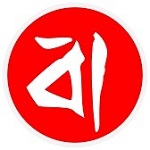Dismislab reveals how misinformation campaign exaggerated CHT violence death tolls to discredit Yunus Government
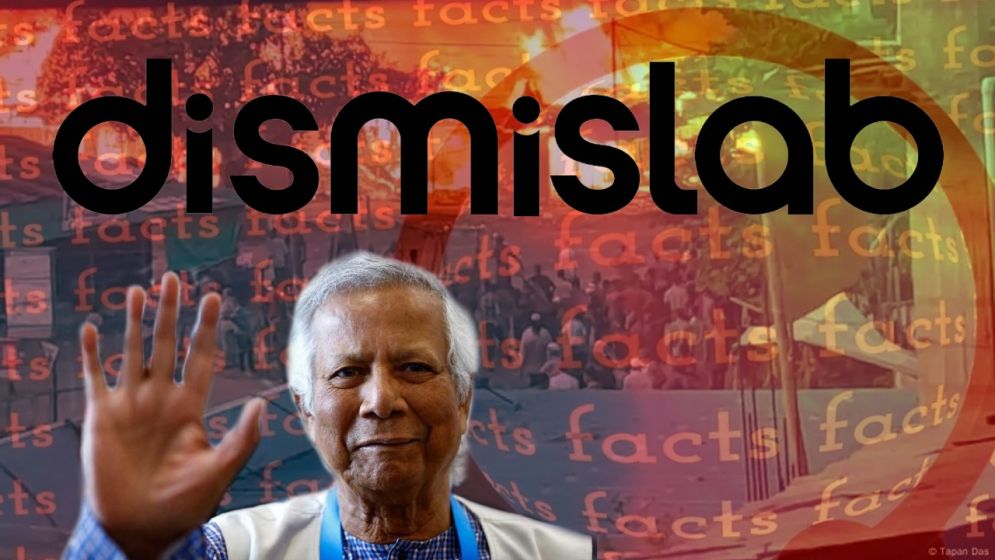
Dismislab, an independent information laboratory based in Dhaka, has debunked the misinformation propagated by certain groups aimed at inflating the death toll from the recent violence in the sensitive Chittagong Hill Tracts (CHT) region.
Renowned for its objective analysis and fact-checking, the research organization has also revealed that there was a deliberate effort to frame the recent CHT violence as purely communal and ethnic strife, which is far from the reality of the situation.
It all started on September 18, when a mob attack triggered by theft accusations in Dighinala, Khagrachari, resulted in the death of a young man. The next day, violence erupted between Paharis and Bengali settlers, leading to arson that destroyed mostly indigenous-owned shops.
The unrest spread to Rangamati, causing four deaths from minority communities and injuring at least 80 people in two days.
Two fatalities occurred when security forces opened fire in Khagrachari, with the ISPR claiming self-defense against armed groups.
The NHRC expressed concern over the escalating violence. The CHT Commission and IWGIA condemned the violence against indigenous people and urged the interim government to protect them.
Amidst growing concerns over the human rights of minority hill communities, misinformation regarding the indigenous death toll spread rapidly online, fueling confusion and panic.
Social media posts on platforms like X, Facebook, and YouTube grossly inflated the death toll, causing further alarm.
This disinformation was amplified by statements from various Indian organizations and politicians, speeches at student protests, and even seeped into mainstream media reports in India, becoming a political tool on both sides of the border.
Some narratives falsely portrayed the violence as a systematic effort to suppress Buddhist and Hindu minorities in Bangladesh. Others baselessly accused the army, the Bengali population in the Hill Tracts, and the interim government of orchestrating genocidal attacks.
Dr. Muhammad Yunus, the chief advisor to the interim government, was particularly targeted, with some even demanding the revocation of his Nobel Peace Prize.
The analysis by Dismislab delves into how the reported death toll in the hill conflict escalated from four to one hundred, who was responsible for spreading this misinformation, the methods and extent of its dissemination, how false online narratives influenced real-world perceptions, and the role of political motivations in this process.
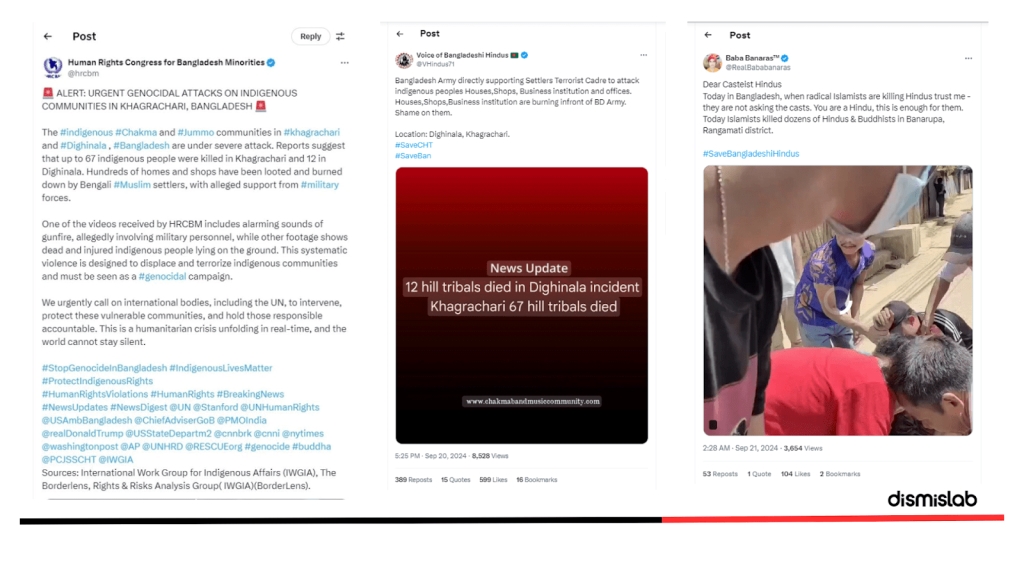 Chronicles of event: How the death
numbers were inflated
Chronicles of event: How the death
numbers were inflated
Dismislab found out that the false death tolls primarily emerged after the Khagrachari shooting incident on September 19.
The clash started at 10:30 p.m., and at 12:54 a.m., a Facebook page called "Jummo" falsely claimed "32 people already died. All eyes on Khagrachari." This was the first identified post spreading false death toll information.
The page was created on September 18, just a day before the shooting. Its profile picture featured the logo of "The Jummo Times", an online portal from Tripura, India. By midnight on the 20th, numerous profiles and pages were repeating this exact false claim.
Within an hour of the initial false claim of 32 deaths, the number escalated to 35. Facebook posts falsely asserted, "Bangladesh Army Opens Fire in Khagrachari, September 19, 2024 — already 35 Indigenous peoples killed by the Bangladesh Army."
These posts included videos of gunfire and images of victims, but lacked any evidence of fatalities. One of the earliest instances of this claim was found on a Facebook page named "RC's World," seemingly operated by someone based in France.
By 3 a.m., the alleged death toll further increased to 36.
These claims typically read, "If the Awami League government is responsible for all the killings before August 5, then why won't the central coordinator be held accountable for the killings after August 5??? Why hasn't he been arrested yet?? The hills are filled with cries as 36 people have been killed, along with 200 homes burned to ashes."
This false information was widely disseminated.
One of the first to share this claim was Mohammad Zakaria Islam, a self-identified Bangladeshi citizen and activist of the recently ousted Bangladesh Awami League.
Notably, several early sharers of this disinformation also identified themselves as members of the Awami League or its student wing, Chhatra League, Dismislab found out.
On September 20, a video falsely claiming 33 Chakma deaths in Dighinala emerged from "The Jummo Times." The death toll was later inflated to 67 and then 79. The earliest claim of 67 deaths came from Atul Chakma, who resides in India.
By 3 p.m., posts detailing the conflict falsely stated, "As of the time of writing this message, 67 people have died."
These posts compared the events to the 1971 genocide, and specifically mentioned "Bengali Muslim settlers."
These posts cited sources like Heera (an indigenous influencer), Dhaka Tribune, and the Chakma Band Music Community, none of which had published such death tolls.
Among those spreading this claim were Atul Chakma, Advocate Sumanta Chakma, and Chakma Babu.
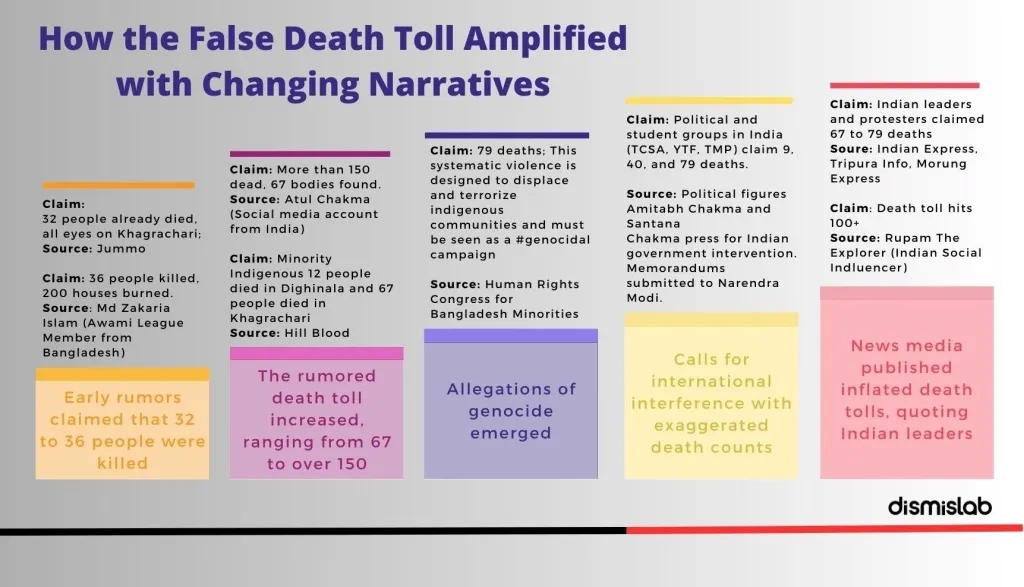
Inflated deaths become “genocidal
attack” through propaganda
Meanwhile, an Indian influencer uploaded a YouTube video claiming "Over 100 people killed," which garnered thousands of views and comments expressing belief in the false information.
Dismislab analysis pointed out that the most widespread false claim stated 79 deaths in the hill tracts conflict. This originated from a page called "Hill Blood."
At 10:15 a.m. on the 20, the Human Rights Congress for Bangladeshi Minorities (HRCBM) also spread this claim, alleging a genocidal campaign and calling for UN intervention.
Using HRCBM as a source, the claim of 79 deaths and genocide spread widely.
HRCBM is a UN-accredited NGO, but it has previously shared debunked information. Its Facebook page admins are based in the U.S. and India.
HRCBM also spread the claim on X, citing sources like IWGIA, The Borderlens, and the Rights and Risks Analysis Group, but no similar death tolls were found on their official platforms.
Despite misinformation, Suhas Chakma, director of the Rights and Risks Analysis Group, reported nine indigenous deaths and urged India to downgrade ties with Bangladesh.
The Borderlens, citing Chakma's letter, mentioned five unidentified bodies at Khagrachari hospital, a claim not substantiated. IWGIA only mentions four deaths in its statement.
Another group falsely claimed Bangladeshi Hindus and Buddhists were being killed in the conflict. An X account called "Baba Benaras" alleged Islamists killed dozens of Hindus and Buddhists in Rangamati, Dismislab analysis found out.
The "Voice of Bangladeshi Hindus" X handle also propagated false information claiming 79 deaths.
Then on September 20, Indian political and student organizations began condemning the incidents in the Chittagong Hill Tracts, often citing exaggerated death tolls in protests.
Tripura's Minister Santana Chakma falsely claimed 40 deaths in a letter to Narendra Modi.
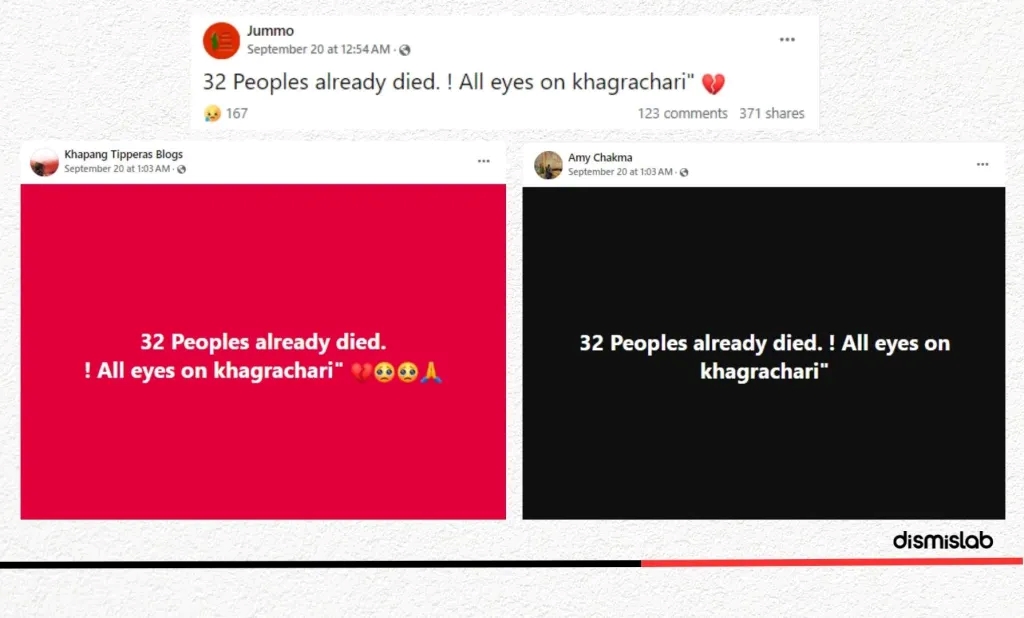
Misinformation and propaganda turns
into a political campaign
The false death tolls spread by Indian activists infiltrated mainstream news, including a press briefing by the Tripura Chakma Students' Association (TCSA), which condemned the reported deaths of 67 indigenous people and even called for the inclusion of the Chittagong Hill Tracts in India.
On September 21, several organizations, including TCSA and the student wing of the Tipra Motha Party (TMP), held protest rallies where Amitabh Chakma falsely claimed over 79 deaths.
Several media outlets, including The Indian Express, reported death tolls ranging from 67 to 70, based on claims made by the protesters.
Twitter handles claiming to be news outlets also spread various false death tolls, including India's "Megh Updates", "Organizer Weekly", and Myanmar's "Arakan Bay News".
The whole issue was politicized by both BJP supporters and ousted Bangladesh Awami League backers. Many posts labeled the incidents as genocide, calling for international intervention.
Dr. Muhammad Yunus was blamed for the killings, with calls to revoke his Nobel Prize. Suhas Chakma accused Bangladesh of ethnic cleansing.
Indian organizations cited the deaths of nine tribals and demanded India's intervention. TCSA falsely claimed 67 indigenous deaths and demanded the incorporation of the Chittagong Hill Tracts into India.
During a protest, Dr. Yunus was targeted, demanding military rule and genocide be stopped until the Chittagong Hill Tracts become part of India.
Awami League supporters used false death tolls against Dr. Yunus and the interim government.
They shared claims of 32 and 36 deaths, and compared Dr. Yunus to Aung San Suu Kyi, falsely accusing him of orchestrating the killings. The hashtag #StepDownYunus was used on X to spread these falsehoods.
By September 22, a campaign to revoke Dr. Yunus's Nobel Peace Prize started, citing the violence in Rangamati and Khagrachari. The petition accused Dr. Yunus of complicity in human rights violations.
This petition was shared on social media by Sajeeb Wazed Joy, son of former Prime Minister Sheikh Hasina. However, the petition is no longer available on Change.org.
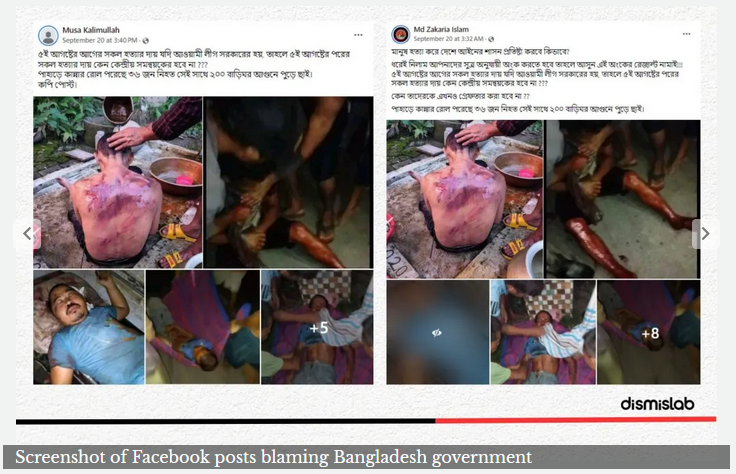
So, how many deaths had actually
occurred?
Leading Bangladeshi media outlets reported four confirmed deaths in the Chittagong Hill Tracts conflict. The Kapaeeng Foundation corroborated this, adding that nine were injured by security forces. The ISPR claimed the casualties occurred during a retaliatory fire against UPDF.
Dismislab verified the death toll with local sources, confirming four deaths from the indigenous community - three in Khagrachari and one in Rangamati.
The deceased were Junan Chakma, Rubel Tripura, Dhananjan Chakma, and Anik Kumar Chakma.
Himel Chakma, a journalist, confirmed four deaths and around 70-80 injured in Rangamati. Another journalist estimated over 200 injured, with about 50 hospitalized.
They dismissed the inflated death tolls circulating online as baseless and likely spread by parties with vested interests. Satej Chakma and Pradip Chowdhury also labeled the high death tolls as misinformation.
Additional Superintendent of Police in Rangamati stated these numbers are unreasonable and aimed at destabilizing the situation. Aungkon Chakma, central president of the Hill Students' Council, called the exaggerated death tolls completely false and intended to create panic.
—-

